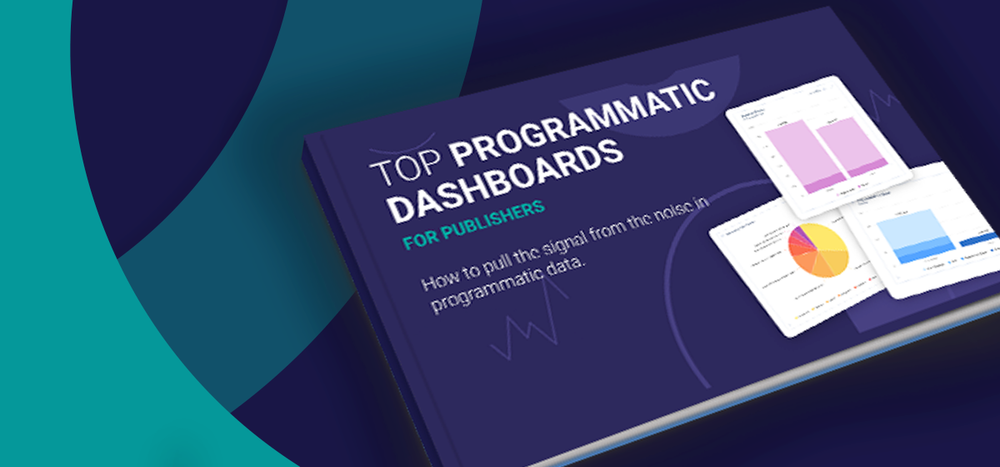On July 31st, 2019 Google will shut down DoubleClick Sales Manager (DSM). This isn’t news to publishers, who have spent their time since the announcement evaluating OMS providers and cautiously contemplating the colossal commitment that comes with migrating onto a new platform. With the sunset date fast approaching on the horizon, publishers need to be prepared.
In this post, we’re going to take a look at what’s happening with DSM and what to look for in a new OMS. Plus, we’ll be reviewing some of the top OMS providers and their products.
Is DSM disappearing for good?
It’s a little more nuanced than that. Following the sunset date, DSM will no longer retain any functionality related to direct sales—including products, workflows, or reconciliations. It will, however, still be able to run programmatic orders through Programmatic Guaranteed and AdX. Sales order lines run through DSM will continue to work through DoubleClick for Publishers (DFP), and will be able to be manually edited. Support for DSM will also be ending following the sunset date.
How should I choose a new OMS?
Migrating systems isn’t the most enjoyable thing to look forward to but, since it can’t be avoided, try to look at this as an opportunity to improve systems and processes. The most important consideration will be to replace your current functionality and integrations, but bear in mind that most OMS products on the market offer more extensive features than DSM, so think about what additional features you would most benefit from—and remember that an Ad-Juster OMS connection can help you ingest additional data for a more complete solution. After analyzing and identifying areas where you could strengthen your process, look for OMS providers with features that can improve these areas.
1. Gather input from your team
Talk to your teams using DSM to find out which DSM features were the most useful and where they feel they need more support. Examine your hard data to find key considerations to your timeline and workflow, including deal volume, closed vs. total proposals, and exports from DSM.
2. Understand your current process
Make a map of your current process that includes documentation of your pre-sales activity and the people and technology partners involved, your channel strategy, and any necessary integrations.
3. Identify product features
Use your team’s input, hard data, and process map to analyze the strengths and weaknesses of your current process. Decide what is critical in a new platform and what would be nice to have and compare that to each OMS’s feature set.
Some areas to consider are:
Integrations: Assess the current integrations of a potential provider, from ad servers to ad-tech, to see what type of connections they prioritize and if that aligns with your own needs. Remember that an Ad-Juster OMS connection can be used to help pull in external data.
Flexibility: Look for a system that is flexible enough to handle the complex execution requirements of your current tech stack.
Scalability: Look for a provider with a scalable platform that can easily automate the roll out of new features and connections and save you time and manual labor.
Data Availability: Find an OMS that can offer you a top-down view into your inventory and partners. Getting insight into how your deals are transacting helps you make informed decisions about supply allocation and inventory pricing.
Cross-Channel Management: Be mindful of the ability to manage your direct and programmatic inventory so you can holistically analyze your yield across different channels.
4. Vendor considerations
Once you have a good idea of your needs and product feature sets, the next consideration should be the vendor, itself. You don’t want to go through all the effort of migrating only to find out down the road that the OMS is developing in a different direction than you need.
Some questions to ask are:
Where does the vendor focus their product development?
What are the planned feature releases? Does it align with your goals/needs?
Who are the other clients using the OMS? Similar to the above, it’s always helpful when multiple clients are asking for the same thing.
Is the OMS custom or turnkey?
Will you need to invest IT resources in perfecting the platform for your use case? Or, does the vendor provide the technical and account support to structure your solution?
How extensive will the training be?
How quickly will your team be able to learn the new system? A labor-intensive setup and training can negatively affect productivity and adoption.
With a solid plan for reviewing your needs and desired features, it’s time to look at the options available on the market. Below, we review some of the top OMSs on the market.
Top OMS reviewed

Operative.One by Operative
What It Is: Operative.One is quoted as being “the number one operating system for top digital media companies” globally. With clients including Healthgrades, NBC, Univision, and Vice Media, Operative.One offers a number of features to help increase revenue while simplifying workflow and eliminating errors.
Key Features: Operative.One offers several key features that make it a robust option to replace DSM. This OMS offers similar features to DSM—such as an automated push to DFP (as well as to other ad servers, including AppNexus and Freewheel), product packaging, migration automation tools, and simple Media Plan creation with both pricing and inventory approvals.
It also offers dashboards that cover direct and indirect sales through DFP and AdX, audit compliance for billing and revenue reporting, and an open API, which allows you to choose additional point solutions and plug them into the OMS. They allow you to specify the billable server and have a local implementation with Google Ad Manager—additional data can be ingested with an Ad-Juster OMS connection. Operative.One also gives you the ability to create premium marketplaces and an agency EDI interface with Prisma to streamline the RFP process.
Who It’s For: Publishers who need an OMS with similar features to DSM that can be fully customized for their workflow.

Digital Hub by WideOrbit
What It Is: WideOrbit offers Digital Hub, a streamlined OMS that unites sales, ad ops, and finance within a single solution. Digital Hub helps publishers manage their complete ad sales cycle (from order to invoice and analysis), improve efficiency, simplify workflows, and maximize revenue.
Key Features: Digital Hub automates order creation in the ad server, pricing rules, proposal approvals and reporting. It integrates with Google DFP, most other major ad servers, CRM tools, accounting systems, data warehouses, and programmatic platforms. It has the capability to manage print and digital together in the same system. Invoices can be generated and delivered directly from the system to simplify billing and reconciliation.
Beyond strictly OMS features, Digital Hub provides company-wide access to a product catalog, inventory avails, approvals, sales and delivery data, and rate cards. They offer built-in and customizable dashboards. The reporting tool can generate revenue forecasts and reports on product and package performance.
Who It’s For: Digital Hub is perfect for publishers with multiple ad servers, outlets, and properties and who need to track orders, lines, and traffic across multiple systems.

AdBook+ by FatTail
What It Is: AdBook+ streamlines the ad sales and revenue processes for some of the most prominent publishers on the Web. FatTail's integrations with other technology partners allow publishers to use AdBook+ as a true one-product solution for optimally managing the sale and fulfillment of guaranteed ad inventory across all media products and sales channels.
Key Features: AdBook+ supports cross-channel order-to-cash processes with integrations and workflow enhancements to sales, ad ops, finance, and management. AdBook+ lets you connect first and third party ad servers (with an Ad-Juster OMS connection), ERP and CRM systems, BI platforms, and DSPs all via robust APIs. The OMS allows for product classification and packaging, real-time forecasting, dynamic pricing, and self-serve media buying. It simplifies workflows with automation, notifications, approvals, and consolidated campaign data in addition to creative management, media planning, and inflight revisions. On the revenue side, publishers have tools for rate enforcement, revenue controls, invoices and billing adjustments, reconciliation, and multiple currencies.
Fattail is a leading DFP integration partner and offers automated tools to facilitate a smooth migration without disruption. System configurations can be as simple or complex as your business needs.
Who It’s For: Publishers who rely heavily on DFP and are looking for a more complete solution to manage the order-to-cash process.

Adpoint by Lineup
What It Is: Adpoint Order Management integrates with all major accounting and ad-serving solutions and offers the capability to book a single campaign across multiple media channels. It is a cloud-based solution that can be accessed from any device and updates are released every six weeks. The system can manage and report on the performance and traffic of all your advertisements within a single system to maximize effectiveness and revenue.
Key Features: Adpoint sends ad orders automatically to the ad server/page and spot planning tools, and returns delivery data. It adds approvals to your workflow, including discount, NPPP/yield, credit control, and space-availability checkpoints. Adpoint offers consolidated invoicing and manages contracts for market segments, customers, and agencies, while providing real-time inventory visibility and ad-density management capabilities. It easily integrates with any ad-serving solution for digital ads, including Google DFP, ADTECH, and Open AdStream, and seamlessly integrates with radio stations, page planning systems, and ad design systems. With an implementation time of less than 12 weeks, you can implement a platform that allows you to fully automate your digital advertising sales workflow.
Who It’s For: Publishers who need multi-channel support and mobile access for their team with minimal IT support.

Cloudsense by Salesforce
What It Is: Orchestrator from CloudSense, gives you the power to deliver every order quickly and seamlessly with pre-built and easily configurable templates for complex and long-running processes—all in Salesforce. Orchestrator empowers your business users to drive operational efficiencies and personalized, 1:1 customer experiences with automation, visibility and insight.
Key Features: Orchestrator helps reduce refunds for failed orders with eligibility checks that ensure accuracy before an order can be placed. It breaks down complex orders into sub-orders and separates them to optimize the delivery of each element while coordinating the overall customer order. This OMS allows you to holistically measure and report on performance to provide insight into performance as well as processes. It helps minimize risk through automated alerts for process issues, which allows you to focus on resolution before problems become costly customer issues. Orchestrator offers real-time visibility to quickly resolve provisioning bottlenecks as well as updates to all stakeholders on the progress of any channel.
One of the more unique features offered is their drag & drop process modeling. You can design your processes using visual drag and drop design interface that allows fast creation and easier maintenance of process templates. Conditional logic and rules can be applied to build serial, parallel and hybrid processes for maximum flexibility.
Who It’s For: For any publisher that already heavily relies on Salesforce and provides ongoing services and subscriptions that is interested in continual sales process improvements.

Placements.io
What It Is: Placements.io automates order-to-cash for publishers and marketing technology companies. The platform manages orders, inventory, billing, and integrations for direct and programmatic channels.
Key Features: OPlacements.io highlights their simple interface that improves workflow, their product and package entry method that reduces errors, and available real-time forecasts for revenue and demand. They also offer simple one-click integrations with DoubleClick, Salesforce.com, Netsuite, Ad-Juster, and internal tools so you can get a complete picture between booked, delivered, and actuals. In addition, Placements.io has insertion order creation, ticketing, line item bulk editing, financial reconciliation, and predictive analytics. Unfortunately, you can’t specify billable server but can pull in some third-party metrics with an Ad-Juster OMS connection.
Setup is pretty quick with Placements.io’s proprietary migration tool and process, and the OMS works natively with programmatic, across channels like mobile, video, advanced TV and others. Their open fluid design and real-time interfaces inform publishers about performance and a powerful, modern product catalog allows publishers to build products more quickly and layer on targeting in a way that improves pricing and preserves discounting.
Who It’s For: Publishers who are looking for an intuitive, straightforward UI, a fast, efficient platform, and a partner/vendor that is continually developing features and solutions.
In Conclusion
There’s a lot of DSM replacement options out there for publishers of all sizes and types and this can be a great opportunity to increase OMS functionality and improve workflow. But you’re not the only publisher considering a change, so keep this in mind when asking about implementation timelines, as they may be longer than average.
With a solid plan and a clear understanding of your needs and what is available, you’re ready to make the right choice. The DSM deprecation is imminent so look at the migration as an opportunity to audit current processes, upgrade your tech, and improve your workflow.
This is not an exhaustive list of available options and we’re happy to share our experiences with other OMSs you may be considering. Have additional thoughts or comments? Contact us ›






